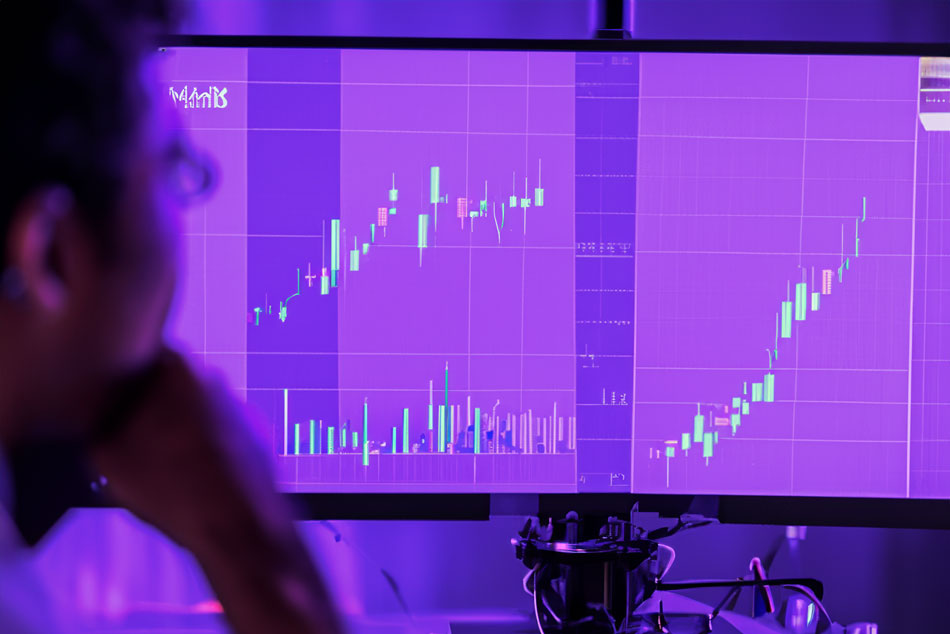As the saying goes, “Practice makes perfect.” However, even experienced forex traders can fall into common pitfalls that hinder their success in the market. In this article, we will explore 10 mistakes that even seasoned traders make and how to avoid them. Whether you’re a newbie or a seasoned trader, understanding these mistakes will help you strengthen your trading strategy and increase your chances of success in the forex market.
Overlooking Risk Management Strategies
One of the most crucial aspects of forex trading, yet often overlooked, is implementing effective risk management strategies. It’s easy to get caught up in the thrill of potential profits, but without proper risk management, you expose yourself to unnecessary losses. Successful traders understand the importance of setting stop-loss orders, using appropriate position sizing, and maintaining a diversified portfolio to minimize risks.
Let’s delve deeper into the concept of stop-loss orders. A stop-loss order is a predetermined price level at which a trader will exit a trade to limit their losses. By setting a stop-loss order, traders can protect themselves from significant losses if the market moves against their position. It acts as a safety net, ensuring that losses are kept within a predefined acceptable range.
Position sizing is another critical aspect of risk management. It involves determining the appropriate amount of capital to allocate to each trade based on the trader’s risk tolerance and the size of their trading account. By carefully calculating position sizes, traders can ensure that no single trade will have a significant impact on their overall portfolio. This approach helps to spread the risk and avoid overexposure to any particular currency pair or market event.
In addition to stop-loss orders and position sizing, maintaining a diversified portfolio is essential for effective risk management. Diversification involves spreading investments across various currency pairs, asset classes, and trading strategies. By diversifying, traders can reduce their exposure to any single market or event, thereby minimizing the potential impact of adverse price movements.
Furthermore, it’s crucial to keep emotions in check when it comes to risk management. Making impulsive decisions based on fear or greed can lead to disastrous outcomes. Take the time to plan your trades and stick to your risk management rules to protect your capital and maintain a healthy trading mindset.
Developing a comprehensive risk management plan is a continuous process that requires ongoing evaluation and adjustment. As market conditions change, traders must adapt their risk management strategies accordingly. Regularly reviewing and updating your risk management plan will help you stay ahead of potential risks and ensure the long-term success of your forex trading endeavors.
Remember, successful trading is not just about making profits; it’s also about preserving capital. By implementing effective risk management strategies, you can safeguard your trading account and navigate the unpredictable nature of the forex market with confidence.
Ignoring Market Trends
The forex market is driven by trends, and ignoring them can be detrimental to your trading strategy. Experienced traders know the importance of identifying and following market trends to increase the probability of successful trades. By analyzing charts, technical indicators, and market sentiment, you can spot trends and align your trades accordingly.
However, it’s important to note that market trends are not set in stone. They can change abruptly due to various factors, such as economic news or geopolitical events. Therefore, it’s crucial to stay updated on market developments and adjust your strategy accordingly.
One key aspect of analyzing market trends is studying chart patterns. These patterns provide valuable insights into the market’s behavior and can help you make informed trading decisions. Some common chart patterns include the head and shoulders, double top, and ascending triangle. Each pattern has its own characteristics and implications for future price movements.
Technical indicators are another tool that traders use to identify and confirm market trends. These indicators are mathematical calculations based on historical price and volume data. They can help you determine the strength and direction of a trend. Popular technical indicators include moving averages, relative strength index (RSI), and stochastic oscillator.
In addition to chart patterns and technical indicators, market sentiment plays a crucial role in identifying trends. Market sentiment refers to the overall attitude and perception of traders towards a particular currency pair or market. It can be influenced by factors such as economic data, central bank announcements, and geopolitical events. By gauging market sentiment, you can gain insights into the prevailing trend and adjust your trading strategy accordingly.
While identifying market trends is important, it’s equally crucial to understand that trends can change unexpectedly. Economic news releases, such as employment data or interest rate decisions, can have a significant impact on market sentiment and lead to trend reversals. Geopolitical events, such as trade disputes or political unrest, can also cause sudden shifts in market trends.
To stay updated on market developments, traders often rely on news sources, economic calendars, and financial publications. These resources provide timely information about economic indicators, central bank policies, and geopolitical events that can influence market trends. By staying informed, you can adapt your trading strategy to changing market conditions and potentially capitalize on new opportunities.
In conclusion, ignoring market trends can be detrimental to your trading strategy. By analyzing charts, technical indicators, and market sentiment, you can identify and align your trades with prevailing trends. However, it’s important to remember that trends can change unexpectedly due to various factors. Staying updated on market developments and adjusting your strategy accordingly is crucial for long-term trading success.
Over-Leveraging Trades
Leverage can be a double-edged sword in forex trading. While it offers the potential for higher profits, over-leveraging can quickly wipe out your trading account. Even experienced traders can be tempted to take on excessive leverage to amplify their gains, but this increases the risk exponentially.
It’s essential to use leverage judiciously and consider your risk tolerance before taking on any trades. Stick to a leverage ratio that aligns with your trading strategy and risk management plan to avoid unnecessary losses.
Failing to Take Emotions Out of Trading
Emotions have no place in forex trading. Making decisions based on fear, greed, or excitement can cloud your judgment and lead to poor trade execution. Experienced traders understand the importance of maintaining a disciplined and rational mindset when trading.
Implementing a systematic approach, following a well-defined trading plan, and sticking to predetermined entry and exit points can help keep emotions in check. Additionally, taking regular breaks from trading and practicing mindfulness techniques can help reduce emotional stress and improve decision-making.
Not Having a Trading Plan
A trading plan is a roadmap to success in the forex market. It outlines your trading goals, strategies, risk management rules, and trading timeframe. Without a clear plan, you’re simply gambling with your money.
Experienced traders emphasize the importance of creating a detailed trading plan and sticking to it. This includes defining your trading objectives, identifying suitable currency pairs, setting realistic profit targets, and determining acceptable risk levels. Regularly reviewing and updating your trading plan will help you adapt to changing market conditions and refine your strategy over time.
Not Utilizing Stop Losses
Stop losses are a crucial tool for risk management in forex trading. They allow you to limit potential losses by automatically closing a trade when it reaches a predetermined price level.
Experienced traders always set stop-loss orders for every trade to protect their capital. By defining your risk tolerance and placing stop losses at appropriate levels, you ensure that a losing trade does not spiral out of control. Remember, it’s better to exit a trade with a small loss than to let it run and potentially wipe out a significant portion of your account.
Not Doing Enough Research
Forex trading requires a solid understanding of the factors that influence currency movements. Experienced traders dedicate time to conduct thorough research and analysis before placing trades.
Staying informed about economic indicators, geopolitical events, and market news can give you valuable insights into potential trading opportunities. It’s essential to use reliable sources, such as financial news websites and economic calendars, to stay updated on market developments and make well-informed trading decisions.
Not Diversifying Trades
Diversification is a fundamental principle of risk management. By spreading your trades across different currency pairs, you reduce your exposure to a single currency’s volatility.
Experienced traders understand the importance of diversification and avoid putting all their eggs in one basket. By trading multiple currency pairs that have low correlations, you can potentially offset losses in one pair with gains in another, thus minimizing overall risk.
Reading Too Much into Technical Analysis
Technical analysis is a valuable tool for understanding market trends and making informed trading decisions. However, relying solely on technical analysis without considering other factors can lead to misguided trading strategies.
Experienced traders strike a balance between technical analysis and fundamental analysis. While technical indicators can help identify entry and exit points, it’s crucial to consider broader market trends, economic news, and geopolitical factors that can influence currency movements.
Ignoring Fundamentals
Fundamental analysis is the study of economic indicators, central bank policies, and geopolitical events to assess a currency’s intrinsic value. Ignoring fundamental analysis can result in missed trading opportunities and increased risk.
Experienced traders recognize the significance of understanding the underlying factors that drive currency movements. By considering both technical and fundamental analysis, you can make more well-rounded trading decisions.
In conclusion, even experienced forex traders are susceptible to making mistakes. However, by being aware of these common pitfalls and implementing appropriate strategies, you can enhance your trading performance. Always prioritize risk management, stay informed about market trends, maintain a disciplined mindset, and continuously educate yourself to adapt to the dynamic nature of the forex market. Happy trading!






